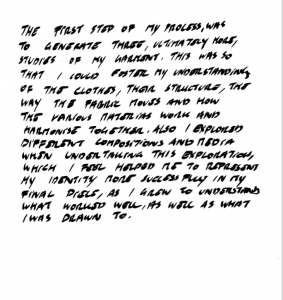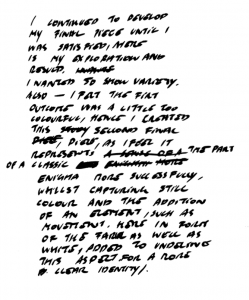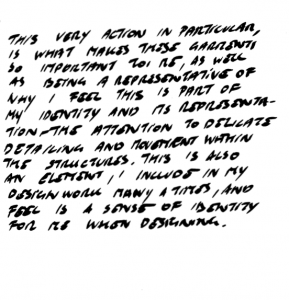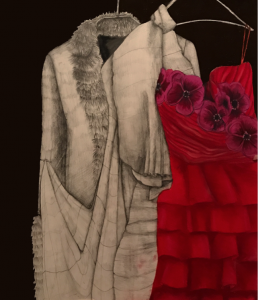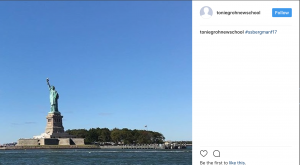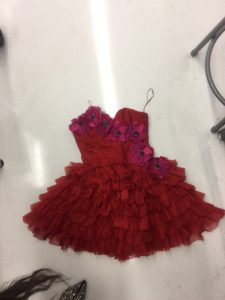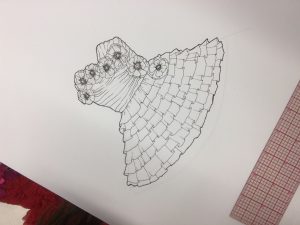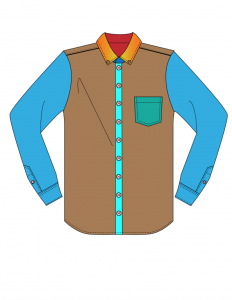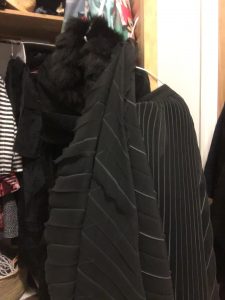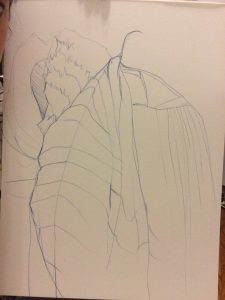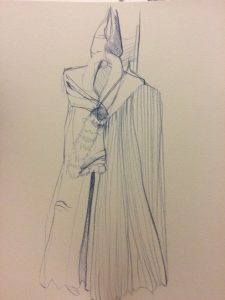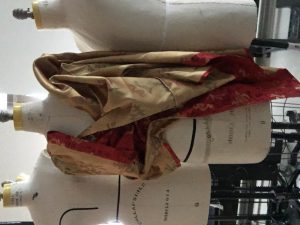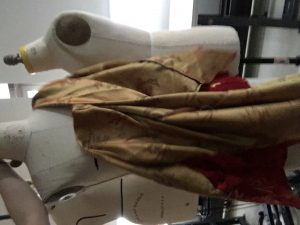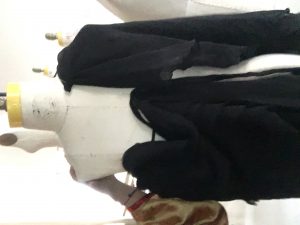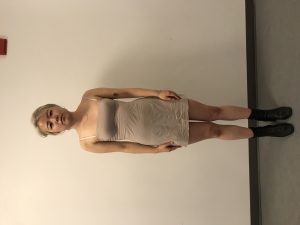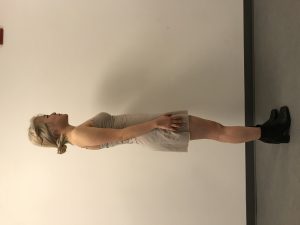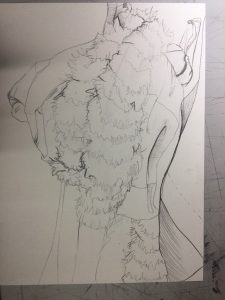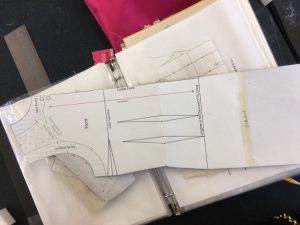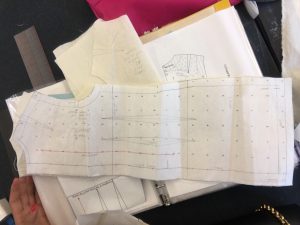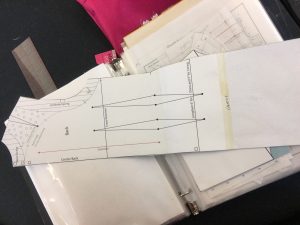
1. (my personal favorite)
‘Elisabeth in Bavaria’
Portrait by Franz Xaver Winterhalte ,1865
A painting of Empress Elisabeth ‘Sissi’ of Austria
This portrait was used as an adverb for the jeweler Köchert and his star shaped diamond jewelry pieces
Empires Elisabeth ‘Sissi’ of Austria :
Elisabeth was known as the most beautiful woman of her time. Due to her beauty and grandiose lifestyle, she is sometimes referred to as being the first ‘royal top model of history’.
Elisabeth Eugenie Amalie, also called Sissi, was born on Christmas Eve of 1837 and grew up in Bayern, as her ancestors were part of Bavarian royalty. At the tender age of sixteen Sissi met Emperor Franz Joseph of Austria-Hungary, which she married soon after.
Jewelry:
The painting was used as advertisement for Köchert jewels and has gained immense popularity and cultural status over the years. The stars, which do not feature Pearls were crafted by Rozet and Fischmeier, who supplied jewelry to the court at the time. However, Köchert jewellery supplied an even greater amount of jewelry in this particular painting, as they created the larger Diamond Stars with Pearls.
Franz Xaver Winterhalter:
Born on the 20th of April 1805, Franz Xaver Winterhalter was a German painter, who was also a master of lithographer. He became particularly re known amongst royalty, as he became one of the most sought after portrait painters of the royals of the 19th century. Evidence of this are his works of Empress Eugénie and Empress Elisabeth of Austria, which were both painted in 1865. Winterhalter’s talent was made prominent by the pastor Josef Berthold Liber, who was a monk at St. Blasien where Franz Xaver went to a village school. Due to his fathers efforts, Franz Xaver Winterhalter completed many apprenticeships, one of them was working in the studio of the portrait painter Joseph Karl Stieler. In 1828, after having finally completed all of his studies and apprenticeships, Franz Xaver Winterhalte traveled to Karlsruhe. This is where the painter found work as a teacher of painting, and created his first royal paintings.
Explanation for my choice:
I was particularly drawn to this painting, as it played a vital part in my childhood, as I am Austrian and Sissi was a huge influence to me, due to her relevance to my home country. When I was just a little child, I was almost obsessed with her and her legacy, as I lived close to Schloss Schönbrunn, where she lived during her ruling. I often found myself visiting the palace and sometimes would dress up as Sissi and pretend to live at the palace, just like her. My mother and father would help me to perfect this phantasy by gifting me replicas of her jewels and my mother even sewed me a the exact same dress as Sissi had. Another reason why I am mesmerized by this piece, is its aesthetic. I admire the precision with which the drapes of the dress and tiny detailing, such as the star-shaped jewels in the empress hair are painted, as well as the sense of movement due to the minimalistic yet dynamic positioning of Sissi’s body.
Relationship to my design work/personal style:
The painting was relevant to my personal design style, as it features a great deal of fabric along side intricate detail. Within my work, I tend to focus on creating pieces, which portray these two aspects, , such as stitching, hence I felt the portrait would be a good fit for my project. The way in which the gown flows and captures a sense of movement, in particularly, were factors that I felt related to my personal style.

2. (second favorite)
‘Sissi in Rubies’
A painting of Empress Elisabeth ‘Sissi’ of Austria
Portrait by Georg Martin Ignaz Raab, 1875
Sissi in Rubies :
Sissi owned a grandiose collection of many precious jewels. However, in this particular painting the empress is wearing an ensemble of a diadem, a choker and a pectoral brooch set with Diamonds and Rubies. These pieces had been passed down and once belonged to Queen Marie-Antoinette of France and her daughter Marie-Therese Duchess Of Angouleme. Due to their relevance, the jewels were forever captured in this portrait painted by Georg Raab in 1875.
Georg Martin Ignaz Raab:
Born on the first of February 1821, Raab was the son of a court paying clerk.
Georg Martin Ignaz Raab studied at the Academy of Art in Vienna in 1833 and graduated in 1837. He distinguished himself as a skillful portrait painter in both watercolor and oil, as well as in the field of lithography. Raab further specialized in the ivory miniature. His miniatures, soon became much beloved and appreciated by the aristocracy and the court.
Explanation for my choice:
As mentioned previously, Sissi had an immense impact on my childhood. However the particular reasoning why I chose this painting, is due to the fact that this was the first painting of Sissi I saw in person, not just on a computer screen, when visiting Schloss Schömnbrunn with my family. Furthermore, it also was my grandmother’s favorite image of Elisabeth of Austria.When I saw the painting at Schloss Schönbrunn, it mesmerized me due to its surface textures, which were visible due to the lighting inside the palace. The sun was lightly shining upon the image, revealing every little brushstroke. As this was the first time I had ever seen a painting this close before in the entirety of my life, I was flabbergasted. Additionally, this image was the only painting of the empress Elizabeth, I had known so far, in which she was depicted wearing her hair rather freely, as well as being clothed with a gown that seemed heavy and quite fitted. I later learned that there were many more portraits in which she had been captured in a similar manner. However, for the time being this made the painting special to me, hence it engraved itself into my memory and thus I chose this image.
Relationship to my design work/personal style:
This piece related to my design style, as it combines a variety of materials of different surface structures to create a whole. This is as element I try to challenge myself to incorporate into almost all of my designs, as I feel a piece is most successful if it can leave someone in awe through its surface qualities. Furthermore, the gown in the picture is rather grand and opulent, which is an aspect that inspires me and is evident in my personal design work quite frequently in deed.
3.

3.(least favorite )
‘Kaiserin Maria Anna von Österreich’
Translated: ‘Empress Maria Anna of Austria’
Portrait of Empress Maria Anna of Austria
Portrait by Johann Nepomuk Ender, 1830
Empress Maria Anna of Austria :
Born in 1803 on September 19th, Maria Anna was the daughter of King Viktor Emanuel I of Sardinia-Piedmont and the Archduchess Maria Theresa of Austria-Este.
Maria Anna married her relative Archduke Ferdinand of Austria in 1831, who was her second cousin. The wedding was held on February 12 at the Hofburg in Vienna, Austria. Even though the empress never spoke German fluently and rather spoke french, she was rather popular within her kingdom throughout her time.
Johann Nepomuk Ender:
Ender’s portrait of Maria Anna Carolina of Austria, shows her wearing a straw hat with a ruffles and a rather opulent ivory gown and is one of his rather well known paintings.
The Painter was born in Vienna onNovember third in 1793. Johann Nepomuk Ender studied for several years at the Academy of Fine Arts in Vienna. On the occasion of an academy exhibition Ender was able to make his debut with his work The Death of Marc Aurel, and this was also awarded. Earlier, Ender found his own style, but at the same time began imitating the painting style of his contemporary Jean-Baptiste Isabey.
After some travel, Ender returned to Austria in 1826 and settled down in Vienna as a freelance artist, ultimately teaching as a professor at the Academy of Fine Arts from 1829 to 1850.
Explanation for my choice:
The painting above appealed to me due to its aethetic. I was fascinated by the great detail evident and impeccable use of paint. Furthermore, the translucency of the material made an impression on me, as I felt this seemed rather scandalous for the time being. Also I enjoy the sense of innocence this picture portrays due to all the ruffled detailing and bright color composition.
Relationship to my design work/personal style:
The painting relates to my personal style and design work, as I was drawn to the use of light transparent fabric. Even though my pieces of work tend to be rather heavy and opulent, in some aspect, I greatly admire designs which convey a sense of weightlessness. Hence I focus on incorporating this ideal into my design work alongside the elements with tend to feature heavy stitching and/or weighted material. Furthermore, the ruffles shown in this painting were relevant, as I noticed a rather frequent use of ruffle detailing in some of my designs, which further compelled me to observe this portrait of martial Anna of Austria.
BIBLIOGRAPHY:
Hamann, Brigitte . “Empress Elisabeth of Austria.” Accessed September 20, 2017.
Haslip, Johan . “The Lonely Empress: Elizabeth of Austria”. Accessed September 20, 2017.
Wheatcroft, Andrew. ‘‘The Habsburgs’.’ Accessed September 21, 2017.
19th Century Paintings – Johann Nepomuk Ender – Dorotheum. Accessed September 21, 2017. https://www.dorotheum.com/en/auctions/current-auctions/kataloge/list-lots-detail/auktion/11688-19th-century-paintings/lotID/1295/lot/2029078-johann-nepomuk-ender.html.
“Georg Martin Ignaz Raab.” – Künstler – Digitales Belvedere. Accessed September 21, 2017. http://digital.belvedere.at/people/1788/georg-martin-ignaz-raab.
“Franz Xaver Winterhalter.” The Metropolitan Museum of Art website, i.e. The Met Museum. Accessed September 20, 2017.
Franz Xaver Winterhalter. “The Royal Collection.” July 02, 1846. Accessed September 21, 2017. https://www.royalcollection.org.uk/collection/405413/the-royal-family-in-1846.
Antonia Groh


